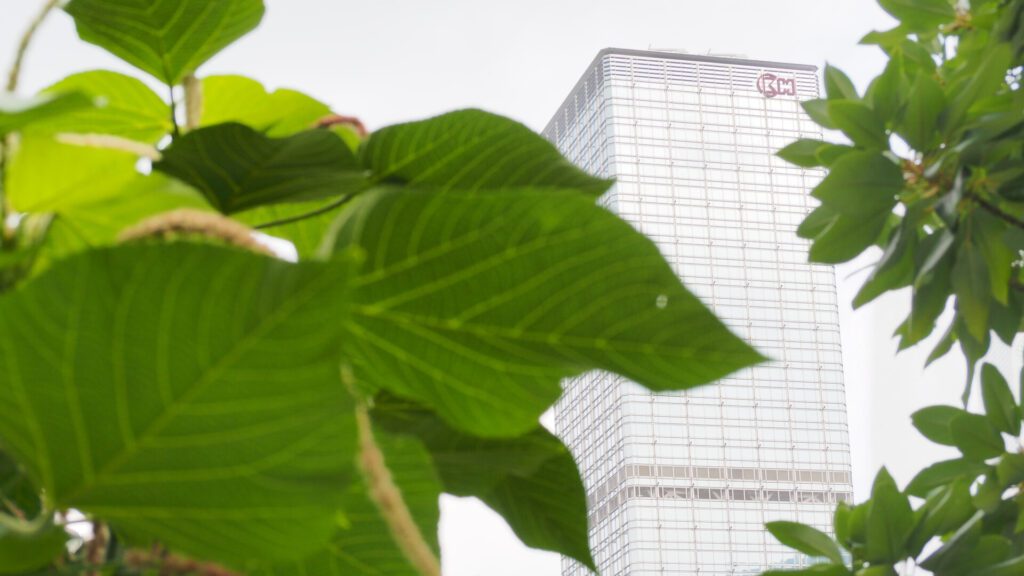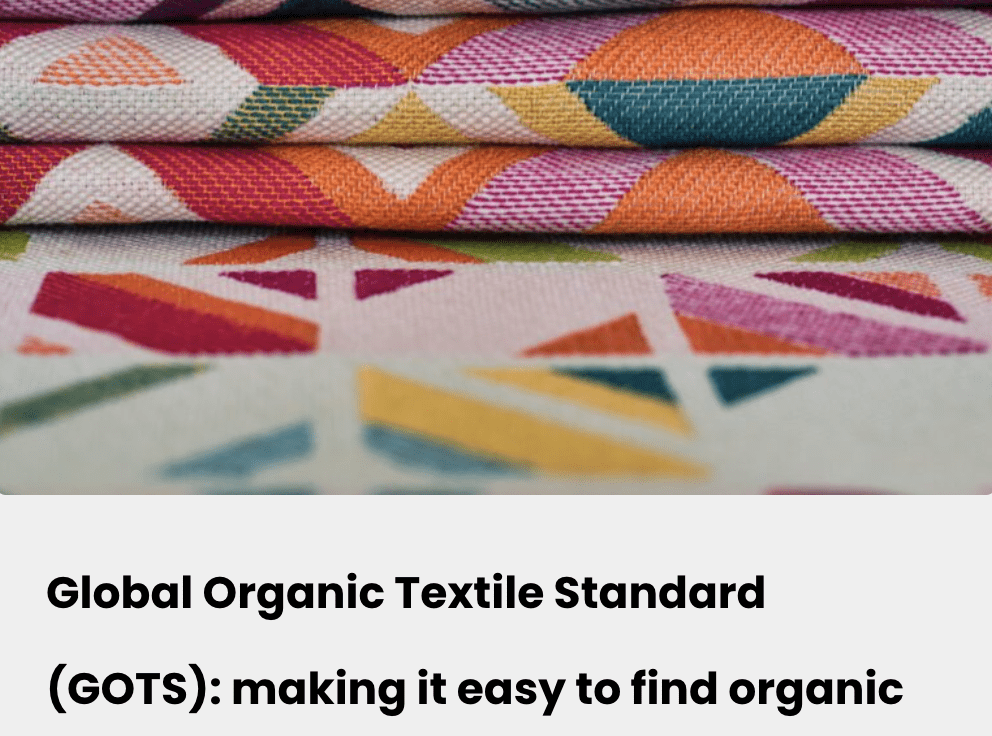
9 of the best sustainable certifications for your home
Let's explore the world of sustainable certifications and review the best ones to look out for when shopping for your home.
Many of us want to make eco-friendly choices when we furnish our homes, but it can be hard to understand which items are truly sustainable. That’s where third-party sustainable certifications come in.
Sustainable certifications serve as a guarantee that a product or service meets specific environmental and social standards. From cleaning products to furniture, certifications provide reassurance that we are supporting companies that prioritize sustainability and serve as an important part of creating a sustainable interior design.
Benefits of sustainable certifications
For businesses, obtaining sustainable certifications can enhance their reputation, attract environmentally conscious customers, and differentiate them from competitors. Consumers, on the other hand, can trust that certified products or services have been produced or provided in a sustainable way, minimizing their environmental impact and supporting ethical practices.
Sustainable certifications contribute to the overall goal of achieving a more sustainable future. By encouraging businesses to adopt sustainable practices, these certifications help to reduce carbon emissions, conserve natural resources, and protect ecosystems. Additionally, they promote social responsibility by ensuring fair labor practices, safe working conditions, and community engagement.
Different types of sustainable certifications
There are various types of sustainable certifications available, each focusing on different aspects of sustainability. Some of the most well-known certifications include organic certifications for food and agricultural products, energy efficiency certifications for appliances and buildings, Fair Trade certifications for ethically sourced products, and forest certifications for sustainable forestry practices. Each certification has its own set of criteria and standards that businesses must meet.
These certifications are typically awarded by independent third-party organizations that assess and verify a company's sustainability practices. The certifications are often displayed on product packaging, websites, or in-store displays, so that you have a clear indication of a company's commitment to sustainability.
The role of sustainable certifications in interior design
Sustainable certifications in interior design can play a crucial role in promoting environmentally responsible and socially conscious practices. They can provide guidelines, standards, and criteria for designers, architects, and builders to follow in the creation of sustainable interior spaces. Some areas of certification focus include:
ecological preservation


Sustainable certifications help designers make choices that reduce the environmental footprint of interior spaces.
resources conservation


Certifications encourage the use of recycled and sustainable materials, as well as the reduction of waste and energy consumption in construction and renovation projects.
indoor air quality


Many certifications focus on improving indoor air quality by setting standards for low VOCs in paints, adhesives, and materials.
energy efficiency


Sustainable certifications often include energy-efficient lighting, HVAC systems, and insulation to reduce energy consumption and operating costs.
waste reduction


Sustainable certifications promote the reduction of construction and demolition waste through recycling, reuse, and responsible disposal practices.
social responsibility


Certain certifications also consider the social aspects of sustainability, such as fair labor practices and the promotion of social equity in design and construction projects.
health and well-being


Sustainable certifications encourage the use of materials and design strategies that support occupant health and well-being.
Challenges and limitations of sustainable certifications
While sustainable certifications provide many benefits, they are not without challenges and limitations. One limitation is certainly the cost and time associated with obtaining them. Small businesses, in particular, may find it challenging to allocate resources for certification processes, making it that much more important for us to reward those to invest in these markers of sustainability.
Another challenge is the sheer number of certifications currently in the market, which can be a bit confusing. With numerous certifications available, it can be difficult to understand the differences between them and make informed decisions. We hope that our article can help alleviate this challenge.
Many sustainability certifications related to the home focus on green homes and new buildings, but that doesn’t mean that if you live in a traditional home there’s nothing you can do to be more sustainable. Focusing on how you furnish your home is a great way to be more sustainable and there are plenty of sustainable certifications that you can be on the lookout for. We've highlighted our favorites below.
9 sustainable certifications to know
1. Fair Trade certification
A Fair Trade certified product is one that has been independently verified to meet specific social, economic, and environmental standards established by a recognized Fair Trade certification organization. These standards are designed to ensure that the product has been produced and traded in a manner that aligns with fair labor practices, environmental sustainability, and ethical sourcing.
Here's what a Fair Trade certified product typically signifies:
- Fair wages: Producers and workers involved in the production of the product are paid fair wages that cover the cost of sustainable production, taking into account social and economic factors. This often includes a premium that goes directly back to the community for development projects.
- Fair labor conditions: Workers have safe and healthy working conditions, and labor rights are respected. Child labor and forced labor are strictly prohibited.
- Direct trade: Reducing the intermediaries between the people who produce and buy products.
- Environmental sustainability: Producers are encouraged to adopt environmentally sustainable practices, such as organic farming, reduced chemical usage, and conservation of natural resources.
- Community development: A portion of the proceeds from Fair Trade sales is invested in community development projects, such as education, healthcare, infrastructure, and more.
- Transparency: The supply chain and production processes are transparent, allowing consumers to trace the origins of the product and verify that it meets fair trade standards.
- Certification: A recognized Fair Trade certification organization has assessed and verified that the product and the producers meet these specific criteria. The product is then labeled as “Fair Trade Certified” to indicate its compliance with these standards.
Purchasing Fair Trade certified products is a way for consumers to support fair and ethical practices and contribute to the well-being of producers in economically disadvantaged regions.
For more information on Fair Trade certification, the major Fair Trade organizations, and Fair Trade products for your home, please visit our in-depth article.
2. FSC certification
The FSC® certified label is a logo and certification mark used by the Forest Stewardship Council (FSC®) to indicate that a product has been sourced from responsibly managed forests and meets their rigorous sustainability and ethical standards. When you see the FSC® certified label on a product, it signifies several important things:
- Sustainable Forestry: The wood or wood-based materials used in the product come from forests that have been managed in accordance with FSC®'s Principles. These principles cover ecological, social, and economic aspects of responsible forest management.
- Environmental Responsibility: FSC® certification ensures that forest management practices minimize environmental impacts, including biodiversity conservation, water quality protection, and the reduction of carbon emissions from deforestation.
- Social Responsibility: FSC® certification includes criteria that protect the rights and well-being of workers and respect the rights of indigenous peoples and local communities who may depend on the forest for their livelihoods.
- Legal Compliance: FSC® certified products are sourced from wood that has been legally harvested, reducing the risk of illegal logging.
- Traceability: The FSC® certification process involves tracking and documenting the flow of certified materials through the supply chain, ensuring that the wood used in the product can be traced back to responsibly managed forests.
- Consumer Choice: The FSC® label empowers shoppers to make environmentally and socially responsible choices when purchasing wood and wood-based products.
The FSC® certified label can be found on a wide range of products, including lumber, flooring, furniture, paper products, and more. When you see this label, you can have confidence that the product aligns with sustainable and ethical forestry practices, making it an environmentally conscious choice.
For more information on FSC certification and FSC products for your home, please visit our in-depth article.
3. GREENGUARD certification
The GREENGUARD logo is a certification mark used to indicate that a product has undergone testing and met certain standards for low chemical emissions and indoor air quality. Specifically, it is associated with the GREENGUARD Environmental Institute (now part of UL Environment), a third-party organization that focuses on indoor air quality and chemical emissions from products used in indoor environments.
Products that carry the GREENGUARD logo have been tested for their emissions of volatile organic compounds (VOCs) and other potentially harmful chemicals. These certifications are often sought after for products used in indoor spaces like homes, offices, schools, and healthcare facilities, where indoor air quality is a particular concern.
There are different GREENGUARD certification programs, such as GREENGUARD Gold, which has even stricter emission limits than the standard GREENGUARD certification. This certification helps consumers and professionals make more informed choices when selecting products for indoor environments, ensuring that they contribute to healthier indoor air quality.
For more information on GREENGUARD certification and GREENGUARD products for your home, please visit our in-depth article.
4. Cradle to Cradle (C2C) certification
Cradle to Cradle® (C2C) framework on which C2C certification is based was developed by architect William McDonough and chemist Michael Braungart and is outlined in their book “Cradle to Cradle: Remaking the Way We Make Things.” This certification goes beyond traditional notions of sustainability by emphasizing the idea that products should be designed from the outset to be regenerative and environmentally beneficial.
Key principles and criteria of Cradle to Cradle® certification include:
- Material health: Products must be made from materials that are safe and healthy for both humans and the environment. This includes avoiding harmful chemicals and substances.
- Material Reutilization: Products should be designed with the intent of reusing their materials in future product cycles. This involves ensuring that materials can be effectively disassembled, recycled, or reused without loss of quality.
- Renewable energy and carbon management: The manufacturing process should rely on renewable energy sources, and efforts should be made to minimize carbon emissions and reduce the product's carbon footprint.
- Water stewardship: C2C-certified products should be designed to minimize water consumption during production and use. Water discharge should also meet high-quality standards.
- Social fairness: The certification takes into account the social impact of the product's manufacturing process, including labor conditions, fair wages, and worker health and safety.
- Product durability and performance: Products should be designed to have a long lifespan, be durable, and perform well. This helps reduce the need for frequent replacement and disposal.
- Continuous improvement: C2C-certified products are expected to undergo continuous improvement in all of the above areas. Manufacturers are encouraged to strive for higher levels of sustainability and product optimization.
Cradle to Cradle® certification is available in multiple levels (Basic, Silver, Gold, and Platinum), with each level representing a higher degree of sustainability and adherence to the principles mentioned above. Products that achieve Cradle to Cradle® certification are recognized for their commitment to circular economy principles, where products and materials are designed to be reused, recycled, or regenerated rather than disposed of as waste.
The C2C certification provides consumers, businesses, and designers with a clear way to identify and support products that align with environmentally responsible and sustainable design practices. It encourages manufacturers to innovate and improve their products with a focus on environmental and social responsibility.
For more information on Cradle to Cradle® certification and Cradle to Cradle® certified products for your home, please visit our in-depth article.
5. OEKO-TEX® certification
The OEKO-TEX® logo certifies textiles and textile-related products to ensure they meet specific safety and environmental standards. OEKO-TEX® is an independent testing and certification system for textiles, and it is designed to address various concerns related to human health and the environment in the textile industry.
The OEKO-TEX® certification encompasses several product labels and testing criteria, including:
- STANDARD 100 by OEKO-TEX®: This label certifies that textiles (e.g., fabrics, clothing, accessories) have been tested for harmful substances. It ensures that the product does not contain substances that are known to be harmful to human health, such as heavy metals, formaldehyde, and certain allergenic dyes. The certification applies to individual textile items rather than entire factories or production processes.
- MADE IN GREEN by OEKO-TEX®: This label combines STANDARD 100 requirements with additional criteria related to sustainable and socially responsible manufacturing practices. It certifies that the textile product has been produced in environmentally friendly and socially responsible facilities. Additionally, this label provides a unique product ID that allows consumers to trace the product back to its origins.
- LEATHER STANDARD by OEKO-TEX®: This certification is specifically for leather products, ensuring that they meet strict criteria for the absence of harmful substances.
- ECO PASSPORT by OEKO-TEX®: This certification is aimed at chemical suppliers in the textile and leather industry. It verifies that the chemicals and dyes used in textile and leather production meet specific safety and environmental standards.
The OEKO-TEX® certification is valuable for consumers because it provides confidence that the textile products they purchase have been tested for harmful substances and meet certain environmental and social criteria. It also promotes transparency in the textile supply chain by tracing products back to their source. Manufacturers and brands can use the OEKO-TEX® certification to demonstrate their commitment to producing safe and environmentally responsible textile products.
For more information on OEKO-TEX® certification and OEKO-TEX® certified products for your home, please visit our in-depth article.
6. Global Organic Textile Standard (GOTS) certification
The Global Organic Textile Standard (GOTS) label certifies textile products made from organic fibers, such as organic cotton or organic wool. GOTS is a comprehensive and globally recognized standard for organic textiles, and it encompasses strict criteria that cover both environmental and social aspects of production. Some key aspects that the GOTS label certifies:
- Organic fiber content: GOTS requires a minimum percentage of organic fibers in the final textile product. In most cases, textiles must contain at least 95% organic fibers to be eligible for GOTS certification. The remaining 5% may consist of non-organic fibers or certain approved chemical inputs.
- Environmental criteria: GOTS establishes stringent environmental criteria for the entire textile production process.
- Social criteria: GOTS also addresses social aspects of textile production to ensure fair and safe working conditions for workers involved in the supply chain.
- Traceability and transparency: GOTS requires traceability throughout the supply chain, from the source of the organic fibers to the final product. It also encourages transparency by allowing consumers to access information about the certified product and its supply chain.
For more information on GOTS certification and GOTS certified products for your home, please visit our in-depth article
7. B Corp sustainability certification
A B Corp (Benefit Corporation) certification, often referred to as a B Corp label, certifies that a business meets rigorous standards of social and environmental performance, transparency, and accountability. This certification is awarded to companies that are committed to using their business as a force for good and making a positive impact on society and the environment. Here are the key aspects that a B Corp label certifies:
- Social and environmental performance – B Corps are evaluated on their overall impact on society and the environment. This assessment covers various aspects of a company's operations, including its environmental practices, treatment of employees, community engagement, and governance.
- Transparency and accountability – B Corps must meet high standards of transparency by providing detailed information about their social and environmental practices and performance. This transparency allows consumers and stakeholders to understand how the company operates and the impact it has on the world.
- Legal commitment to purpose – Benefit Corporations, including B Corps, are legally required to consider the interests of all stakeholders, not just shareholders. This means that the company's mission and purpose extend beyond maximizing profits and include a commitment to social and environmental responsibility.
- Annual impact assessment – B Corps are required to undergo a rigorous annual assessment of their social and environmental performance. This assessment is conducted by the nonprofit organization B Lab, which certifies and recertifies B Corps based on their performance.
- Continuous improvement – B Corps are encouraged to continually improve their social and environmental practices. The certification process provides a framework for identifying areas where a company can make a positive impact and become more sustainable over time.
- Third-party verification – The B Corp certification is not a self-assessment. It is verified by B Lab, an independent nonprofit organization. This verification ensures the integrity and credibility of the certification.
The B Corp certification is a holistic measure of a company's commitment to sustainability and social responsibility. It is recognized worldwide and provides consumers and investors with a reliable way to identify businesses that prioritize people and the planet alongside profits. B Corps aim to balance profit-making with making a positive impact on the world, and the certification helps them demonstrate their dedication to these goals.
8. ENERGY STAR
The ENERGY STAR logo certifies products, buildings, and industrial facilities that meet specific energy efficiency and environmental performance criteria. ENERGY STAR is a program run by the U.S. Environmental Protection Agency (EPA) that promotes energy efficiency and the reduction of greenhouse gas emissions. Here's what the ENERGY STAR logo certifies in different categories:
- Products – ENERGY STAR-certified products are typically appliances, electronics, and lighting that meet stringent energy efficiency standards. These products are designed to consume less energy while still delivering the same or better performance as their non-certified counterparts. Examples include ENERGY STAR-certified refrigerators, air conditioners, computers, and LED light bulbs.
- Buildings – ENERGY STAR certification for buildings applies primarily to commercial buildings and industrial plants. To earn this certification, a building must meet certain energy performance benchmarks, demonstrating that it is more energy-efficient than the majority of similar buildings. ENERGY STAR buildings use less energy for heating, cooling, and other operations, resulting in lower utility costs and reduced environmental impact.
- Homes – ENERGY STAR-certified homes are designed and built to be more energy-efficient, comfortable, and environmentally friendly. They often feature advanced insulation, high-performance windows, energy-efficient heating and cooling systems, and other energy-saving features. Homeowners of ENERGY STAR-certified homes can benefit from lower utility bills and improved indoor comfort.
- Industrial Facilities – ENERGY STAR certification for industrial facilities recognizes manufacturing plants and similar facilities that achieve superior energy efficiency. These facilities implement energy-saving technologies and practices to reduce energy consumption, lower operating costs, and decrease greenhouse gas emissions.
The ENERGY STAR logo serves as a symbol of energy efficiency and environmental responsibility. When you see this logo on products or buildings, it indicates that the item or structure has met or exceeded specific energy performance standards established by the EPA. Choosing ENERGY STAR-certified products and facilities can help individuals, businesses, and organizations reduce their energy use, save money on energy bills, and contribute to the reduction of greenhouse gas emissions, helping combat climate change.
9. LEED certification
The LEED logo certifies that a building or construction project has met specific sustainability and environmental performance criteria as established by the Leadership in Energy and Environmental Design (LEED) rating system. LEED is a widely recognized and respected green building certification program developed and managed by the U.S. Green Building Council (USGBC). Here's what the LEED logo certifies:
- Environmental sustainability – LEED certification assesses the environmental sustainability of a building or project across various categories, including energy efficiency, water conservation, materials selection, indoor air quality, and site sustainability. Projects must meet minimum requirements in each category and earn points to achieve different levels of LEED certification: Certified, Silver, Gold, or Platinum.
- Energy efficiency – LEED evaluates a building's energy performance and encourages the use of energy-efficient technologies and practices. This includes the use of renewable energy sources, energy-efficient lighting, HVAC systems, and building envelope improvements.
- Water efficiency – LEED encourages the efficient use of water resources through strategies such as low-flow fixtures, efficient irrigation systems, and water recycling or reuse.
- Materials and resources – The certification program promotes the use of sustainable materials, responsible sourcing, and waste reduction in construction and operation. It also encourages the recycling and reuse of construction materials.
- Indoor environmental quality – LEED focuses on creating healthy and comfortable indoor environments for occupants. It addresses factors such as air quality, natural lighting, thermal comfort, and the selection of non-toxic materials.
- Sustainable site development – LEED encourages responsible land use and site planning. This includes factors like minimizing site disturbance, preserving open space, and promoting public transportation and bicycle access.
- Innovation and regional priority – Projects can earn additional points for innovative strategies that go beyond standard LEED requirements. Regional priority credits are awarded based on the geographic location of the project and regional environmental priorities.
- Green building certification – Achieving LEED certification involves a comprehensive assessment and verification process conducted by third-party professionals. The LEED logo indicates that the project has undergone this rigorous evaluation and has met the specified sustainability standards.
LEED certification is widely used internationally, and it is considered a benchmark for sustainable and environmentally responsible building design and construction. It helps promote resource-efficient and eco-friendly building practices, reduce environmental impact, and create healthier and more energy-efficient spaces for occupants. The LEED logo is a symbol of a building's commitment to sustainability and environmental responsibility.


How businesses obtain sustainable certifications
Obtaining a sustainable certification requires businesses to implement and adhere to specific sustainability practices. The process typically involves a thorough assessment of a company's operations, supply chain, and environmental impact. Businesses may need to make changes to their practices, such as reducing energy consumption, implementing waste management systems, or sourcing raw materials from sustainable suppliers.
Generally, to obtain a sustainable certification, businesses must submit an application to the relevant certification body and undergo an audit or inspection. The certification body will evaluate the company's sustainability practices, review documentation, and conduct on-site visits if necessary. If the company meets the required standards, they will be awarded the certification.
The role of sustainable certifications in corporate sustainability strategies
Sustainable certifications can play a crucial role in corporate sustainability strategies. By obtaining certifications, businesses demonstrate their commitment to sustainability and hold themselves accountable to specific standards. These certifications provide a framework for businesses to assess their environmental and social impact, set goals for improvement, and track their progress over time.
Furthermore, sustainable certifications can drive innovation and encourage businesses to continually improve their sustainability practices. The certification process often requires businesses to evaluate their operations and make changes to meet the required standards. This process of continuous improvement can lead to the development of new technologies, more efficient processes, and innovative solutions to sustainability challenges.
The impact of sustainable certifications on purchase decisions
While the process to obtain a sustainable certification can be lengthy, the effort is often worthwhile as sustainable certifications can have a significant impact on consumer behavior. A study conducted by Nielsen found that 66% of consumers are willing to pay more for products from companies committed to sustainability.
On the flip side, by displaying a certification, businesses can build loyalty among environmentally conscious shoppers who are now able to find company. Making it easier to find and assess sustainable products gives us all the ability to make the best buying decisions for our own homes.
Case studies of businesses benefiting from sustainable certifications
Numerous businesses have experienced tangible benefits from obtaining sustainable certifications. One such example is Patagonia, an outdoor clothing company that has achieved multiple certifications, including Fair Trade and Bluesign certifications. These certifications have helped Patagonia attract a loyal customer base that values ethical production practices and sustainable materials. They’ve also benefited the company's reputation and positioned it as a leader in sustainable fashion.
Another example is Tesla. Tesla's vehicles are known for both their technology and their sustainability. With certifications such as LEED (Leadership in Energy and Environmental Design) and ISO 14001 (Environmental Management System), Tesla has gained a competitive advantage in the automotive industry. Consumers who prioritize sustainability are drawn to Tesla's eco-friendly approach.


The future of sustainable certifications
Sustainable certifications are a powerful tool in shaping behavior. They provide confidence that the products or services we buy have been produced or provided in a sustainable way. For businesses, obtaining sustainable certifications can enhance their reputation, attract environmentally conscious customers, and create differentiation in a competitive market.
While there are challenges and limitations with sustainable certifications, they play a key role in the future of sustainability. By setting standards and encouraging continuous improvement, certifications drive innovation and contribute to the creation of a greener future.
As sustainability continues to gain momentum, the future of sustainable certifications looks promising. By continuing to support businesses that are investing in proving their sustainability, we can all play a part in building a more sustainable tomorrow.
Articles you may enjoy
Free tips and inspiration in your inbox
Enter your email address below to receive the latest news from The Home Green.



